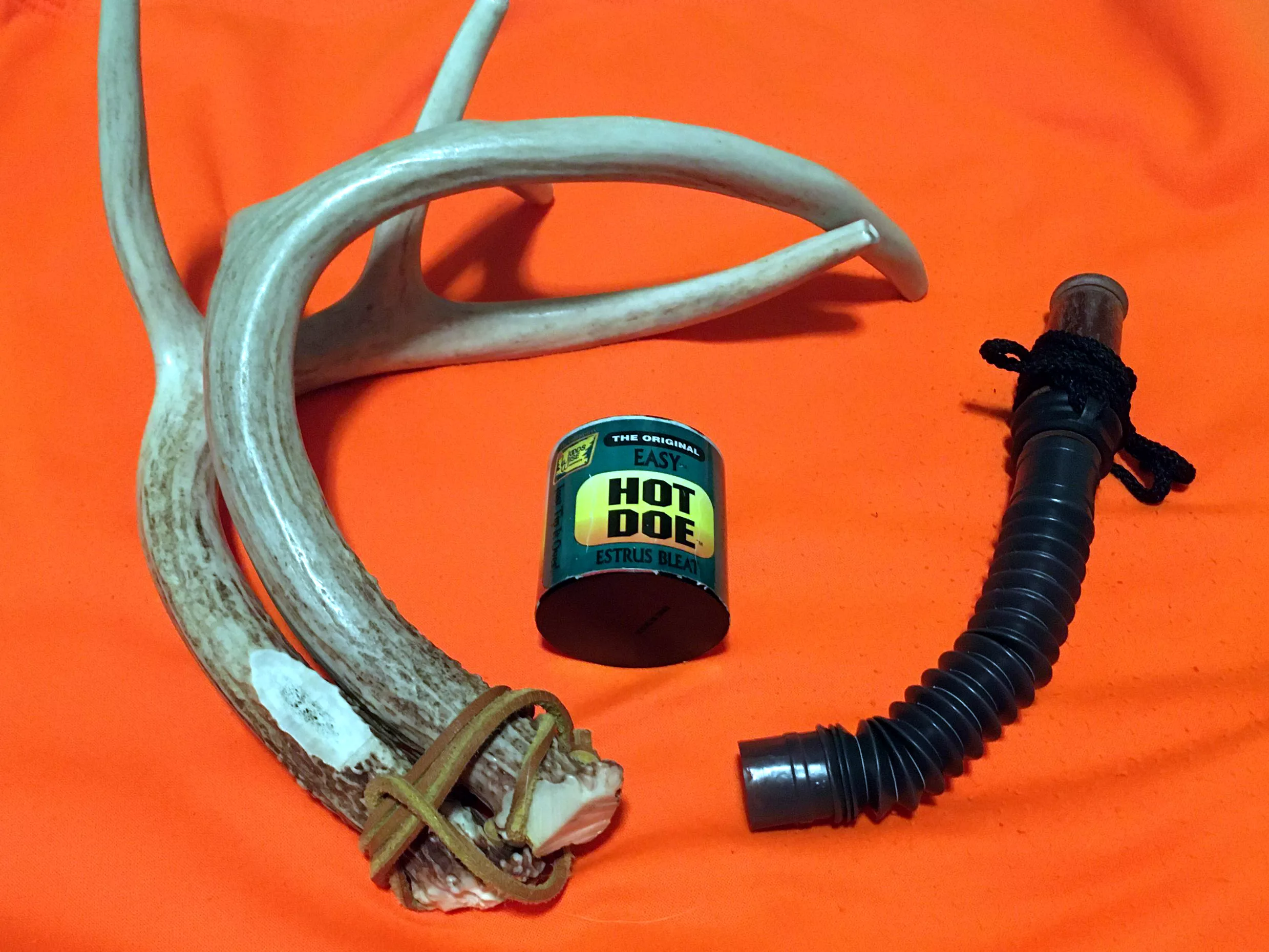
Talk Some Trash! Utilizing deer calls during the rut, which is firing up now across the region, can help bring bucks into shooting range. Practice with rattling antlers, doe bleats and grunt tubes to get the most out of the November experience! Simonson Photo.
By Nick Simonson
There’s nothing so panic inducing as watching an aggressive buck advance on your position having just blown out a challenging three-note grunt call from a tube of wood and plastic hanging from your mouth. It’s enough to make your knees knock and your heart hit a rate that induces palpitations from a flood of adrenaline. Nevertheless, this time of year, my grunt call is firmly in tow on a lanyard around my neck, and whether or not I get a shot at a buck zooming in on a frozen rope toward my stand, those unique moments in time – where we as hunters confuse, enrage, or trigger in some other unknown emotional reaction in a rutting deer – are some of my favorites in the outdoors.
They too remind me of the three primary sounds that get bucks moving this time of year, and always assure that I have that grunt call, a doe bleat and a rattling antler option in my pack for the glory days of early November. Assessing the advantages provided by these tools that are far from just noisemakers, how to be effective with them all during this stretch of the season, and some important reminders about when to use them all come together to produce an exciting hunt.
Grunt Work
The grunt call is by far my favorite call this time of year. While bucks are looking for does and listening for their bleats, the certainly don’t like hearing the evidence of another male invading their territories and trying to home in on their potential mates. Thus, a grunt call, when used to draw in unseen bucks, or bring visible bucks closer is a vital tool.
So too is a doe call, and in a can form is easy to use and produce the sound of a female deer in estrous. A slow, one-note bleat can bring bucks out of cover and into the open, and having an easy-to-use hand model can make the transition from the call to the bow or firearm easier.
Finally, rattling tools – whether in the form of hand-crafted rattling antlers from sheds or a previously-harvested deer, or those synthetic grinders or bags with wooden dowls in them – also add a hint of adversity to the rut-energized landscape. The clack of bone on bone presents the suggestion of a distant battle, and with a little banging of branches, or the added grunt from a tube, can simulate a full on fight between to bucks.
Learn the Ropes
While a simple tip and turn doe can is easy to master, a grunt call and the use of rattling antlers can be a bit challenging. Luckily, a wide array of proposals are now available and documented online in tutorial videos from call producers, outdoor experts, and content creators specializing in hunting scenarios like the rutting season. All these aside, experience is where deer calling is best learned.
From a well-concealed position give a cadence of various calls a try and utilize the things learned on the screen in real life to see how deer in your area react. Being out of view and not easily discovered helps the process, so slight motions required in the use of calls, rattling antlers and other auditory tools won’t get deer suspicious beyond the strange sounds of an unseen challenger or mate. Consider each deer an opportunity this time of year, especially younger ones that aren’t your target, or are more likely to fall for these options.
Get Ready
Calling blind, that is when bucks aren’t visible, can lead to some exciting situations. I’ve had deer rush in and cover 100 yards or more in a matter of seconds following a particularly aggressive grunt cadence, to the point where I’ve been unable to ready my bow for a shot. It’s especially nerve-wracking when there was no sign of him before blasting the note out, and the buck seemingly appears from nowhere. Be prepared after each session to set up for a shot, especially if you do have an interested buck in sight and he’s making his way in your direction to start. Have bows and guns ready to go and positioned properly to take a quick shot if it presents itself.
Now is the time of year that deer calls work great and can add some excitement and get things moving positively in your direction. Consider adding a grunt call, a doe bleat, and a rattling option (or all three) to your repertoire this time of year and experiment with how each one works on bucks in your area. Be prepared even if you don’t think you’re doing it right, because odds are these at least somewhat natural sounds are going to set off the resident buck in your hunting space and bring him into range.
